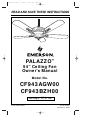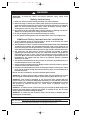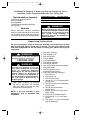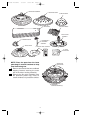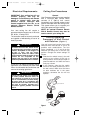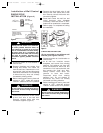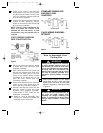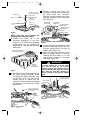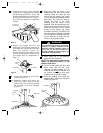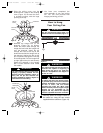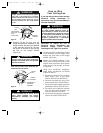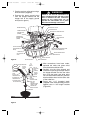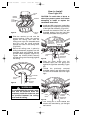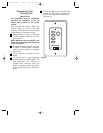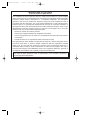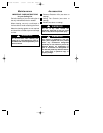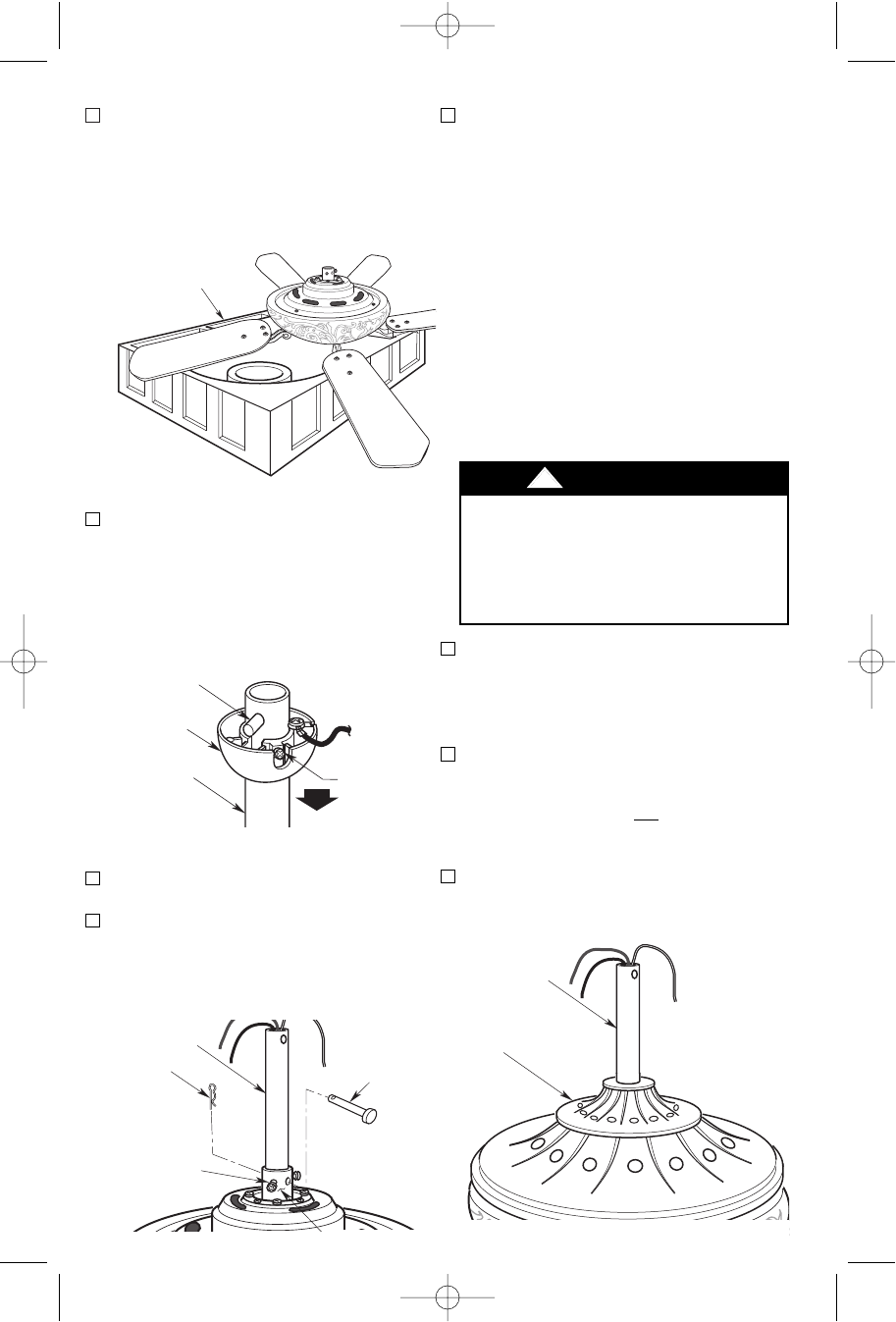
7. Carefully turn the fan motor assembly
upside down in preparation for hanger
ball/downrod installation. Place the
partially assembled fan into the top half
of the styrofoam as shown in Figure 11.
Do not rest fan weight on the light fitter
sockets.
8. Remove the hanger ball from the
downrod by loosening the setscrews in
the hanger ball until the ball falls freely
down the downrod (Figure 12).
Remove the pin from the downrod, then
remove the hanger ball. Retain the pin
and hanger ball for reinstallation in
Step 16.
9. Loosen both setscrews in the motor
coupling (Figure 13).
10. Separate, untwist and unkink the
three motor leads. Route the motor
leads through the downrod and seat
the downrod in the motor coupling
(Figure 13).
PIN
HANGER
BALL
SETSCREW
DOWNROD
Figure 12
HAIRPIN
CLIP
CLEVIS PIN
DOWNROD
SETSCREW (2)
Figure 13
DOWNROD
COUPLING
COVER
Figure 14
11. Align the clevis pin holes in the
downrod with the holes in the motor
coupling. Install the clevis pin and
secure with the hairpin clip (Figure
13). (Pin and clip are supplied in loose
parts bag.) The clevis pin must go
through the holes in the motor
coupling and the holes in the
downrod. Push the straight leg of the
hairpin clip through the hole near the
end of the clevis pin until the curved
portion of the hairpin clip snaps
around the clevis pin. The hairpin clip
must be properly installed to prevent
the clevis pin from working loose. Pull
on the downrod to make sure the
clevis pin is properly installed.
TOP HALF OF
STYROFOAM
Figure 11
12. While pulling up on the downrod,
tighten the two setscrews.
NOTE: The setscrews must be properly
tighten as described above, or fan
wobble could result.
13. The fan comes with black, blue, and
white leads that are 80” long.
Measure up approximately 6 to 9-
inches above the top
of downrod. Cut
off excess leads and strip back
insulation 1/2” from end of leads.
14. Slide the coupling cover down the
downrod until it set firmly on the motor
housing (Figure 14).
!
WARNING
It is critical that the clevis pin in the motor
coupling is properly installed and the
setscrew securely tightened. Failure to
verify that the pin and setscrew are
properly installed (as shown in Figure 13)
could result in the fan falling.
9
BP7335 Palazzo 1/9/07 9:05 AM Page 9



